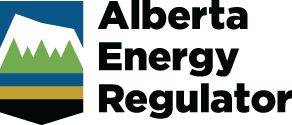Our Enhanced Production Audit Program (EPAP) helps companies comply with our requirements and supports our compliance assurance program. Created through Directive 076: Operator Declaration Regarding Measurement and Reporting, EPAP
- encourages operators to improve their measurement and reporting processes, which leads to greater compliance and may reduce the number of noncompliances that we find in field inspections and audits; and
- helps operators avoid the costs related to enforcement activities created by Directive 019: Compliance Assurance—Enforcement [Rescinded by Manual 013: Compliance and Enforcement Program].
EPAP includes all measurement and reporting requirements contained in directives such as
- Directive 007: Volumetric and Infrastructure Requirements
- Directive 017: Measurement Requirements for Oil and Gas Operations
Who is the program for?
EPAP is for operators who are
- designated as the “operator of record” on Petrinex for facilities reporting volumetric activity, and
- subject to AER measurement and reporting requirements.
The program is used for conventional oil, heavy oil, crude bitumen, and natural gas facilities. Mineable oil sands facilities are excluded.
What’s included in the program?
Click on the following program components for general information. These components are described in detail in the EPAP Operator's Handbook. Learn about the handbook and other EPAP resources on our EPAP References and Resources page.
Controls are special processes designed to ensure that underlying business processes actually reach their goals. EPAP asks operators to evaluate their controls on processes aimed at compliance to ensure that they are effective. If the findings show that there are operational shortcomings, operators are encouraged to improve the effectiveness of their controls—and consequently, their compliance with our requirements.
Every year, operators must submit a declaration stating that they
- have infrastructure (business processes and controls) in place to ensure compliance with AER measurement and reporting requirements;
- have evaluated their controls and are confident that they know the state of compliance in their operating facilities; and
- are addressing and resolving problems identified by their evaluations.
Operators can choose their declaration reporting month. When selecting a month, operators should consider other business activities that may impact their ability to declare on time. These activities could include fiscal year-end accounting, resource availability (e.g., employee vacations), financial audit period, etc.
The submission deadline for the operator’s declaration is by the end of the second month that follows their chosen declaration month (e.g., if August is selected, the declaration is due by the last day of October).
We work with operators to develop a monthly compliance assessment report, which is used to identify potential future noncompliances. The assessment report is based on data submitted by the operator to the AER through Petrinex. The intent of this report is to encourage continuous improvement.
In some cases, we will contact an operator after their assessment. Those discussions are primarily focused on major issues at specific facilities or outstanding issues.
Our staff will trigger an “action item” if we ask the operator to investigate or remediate a particular situation identified from the compliance assessment report, the declaration, voluntary self-disclosure, or some other source. The typical workflow of an action item is as follows:
- After we discuss the situation with the operator and an action item is triggered, the content of that discussion will be confirmed in writing.
- After the operator completes the specified action, they must enter an online summary in Petrinex of what was found or what they did. This will be added to the history of the action item.
- We will review the results and either close the action item as complete or, if compliance is not improving, ask for further action.
If the action items do not eliminate the potential noncompliance (“compliance assessment indicator”) for a particular facility, we may
- escalate the remediation process by requesting that the operator provide more data;
- request descriptions of the controls and evaluations of the control procedures; or
- ask for evaluation results.
If the action items still do not eliminate the potential noncompliance, we may conduct a controls-based or substantive audit. Refer to the EPAP Operator’s Handbook for details.
Access the EPAP System on Petrinex
If you are an operator, you can access the EPAP system through Petrinex.
- Ensure that you understand the EPAP requirements and communicate them to senior management.
- Decide what month to make your declaration period. (You can decide within the first year.)
- Act on the compliance assessment reports when you start receiving them.
- Determine which risks of noncompliance apply to which of your facilities.
- Understand the controls.
- Identify existing or design new controls to address the risk of noncompliance.
- Develop and test your control procedures and evaluate them.
- Ensure that you have documentation for your business processes, your control processes, and your evaluation of controls processes.
- Act on your monthly compliance assessment report.
- Prepare an annual evaluation of controls plan and review it with senior management.
- Review and confirm the applicability of risks of noncompliance to the facilities.
- Review your control designs.
- Evaluate your controls.
- Submit your declaration. We recommend discussing areas of improvement with your senior management.
- Review and update your documentation as necessary.
Contact Us
General questions about EPAP can be emailed to EPAPSupport@aer.ca. For all other inquiries, operators can contact their assigned production audit contact at the AER.


